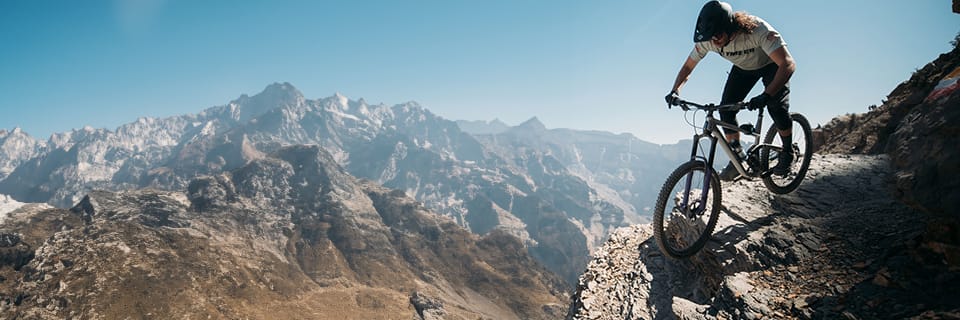There are two main categories of MTB disc brake fluid disc brake fluid: mineral and DOT. Both are immiscible and have different properties.
Types of fluid
Brake fluid transmits the power you exert on the lever to the brake caliper, without any loss since there is no friction and a fluid is incompressible or almost so.
Water could fulfil this function (it's not uncommon to use it in Trial*), but the temperature the liquid can reach under prolonged braking would quickly boil the water, turning it into a gas (commonly known as "air bubbles"): a gas being compressible, your brake would lose all its power and become soft to the touch.
Brake manufacturers therefore use a liquid whose boiling point is much higher than that of water: DOT. A or mineral B.
Remember: never mix them. Do not use a bleeder kit that has been used for DOT on brakes requiring mineral, or vice versa.
DOT
This fluid, which is also used for cars and motorcycles, is standardized; in other words, the recipes for obtaining it are always the same, regardless of the brand. Over the years, this liquid has been perfected, and today there are several versions of DOT. In chronological order: DOT3, DOT4 and DOT5.1.
They are perfectly miscible, since they are all derived from the same base: glycol. When they come out of the bottle, they have a minimum "dry" boiling temperature of : 205°C for 3, 230°C for 4, and 270°C for 5.1
Unfortunately, however, this fluid is hygroscopic, i.e. it easily becomes loaded with water, which lowers the boiling temperature. Even if the brake circuit seems watertight, it allows moisture to enter (around 3% per year). Water will mix with the fluid to such an extent that even if you don't use your ATV, you'll need to bleed your brake system at least once a year. What's more, DOT is corrosive to paints and varnishes, so handle with care.
Note: there is a silicone-based version of DOT5, which is incompatible with other DOTs, and is rarely used on bicycles because of its compression problems.
The Mineral
To avoid the problem of fluid life and corrosion at the same time, brands such as Shimano, Magura and Tektro use a non-standardized fluid: mineral.
Each brand has its own recipe, so mixing them is not recommended. Being hydrophobic, these liquids always boil at the same temperature (e.g. 120°C for Magura Royal Blood or 280°C for Shimano).
Which brake fluid should I choose?
To sum up, if your brakes run on DOT glycol (i.e. 3, 4 or 5.1), we recommend you use the most efficient, i.e. 5.1. If they use DOT5, you'll have no choice. Finally, if they use mineral, use the same brand as your brakes.
If you wish to replace your brakes MTB disc brakes disc brakes and hesitate between a DOT or mineral system, here is a summary of the advantages and disadvantages:
| Miscible | Hydrophobic | Neutral | Standard | Incompressible | |
|---|---|---|---|---|---|
|
DOT3 DOT4 DOT5.1 |
DOT3, 4 or 5.1 you can use whichever you like. Be careful, however, not to use DOT5 or Mineral. | They absorb water and need to be purged at least once a year. | These liquids are corrosive and must be handled with care. | No matter what brand of brake or fluid you use, all are compatible. | A liquid is incompressible, or nearly so, so all the power you exert on the lever is transmitted to the brake caliper without any loss since there is no friction. |
| DOT5 | Does not charge with water, requiring little or no bleeding. | Does not mix with other DOTs. | During prolonged braking, water would rapidly boil and turn into gas (therefore compressible). Your brake will lose all its power and become soft to the touch. | ||
| MINERAL | Does not charge with water, requiring little or no bleeding. | Different for each manufacturer, so you must use only the one specified by the brand. | During prolonged braking, the water would rapidly boil and turn into gas (thus compressible). Your brake will lose all its power and become soft to the touch. |
Découvrez tous nos conseils & Tutoriels
ACCESSORIES - Brake Maintenance
-
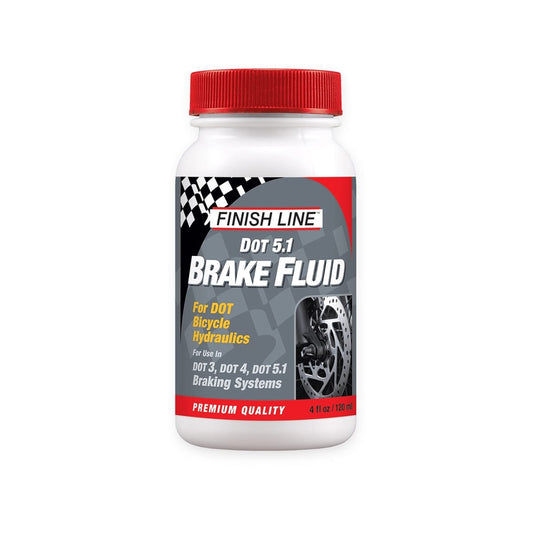
Brake Fluid FINISH LINE DOT 5.1 (120 ml)
Regular price 9,99 €Regular priceUnit price per -

HOPE DOT 5.1 Brake Fluid (250 ml)
Regular price 5,99 €Regular priceUnit price per -
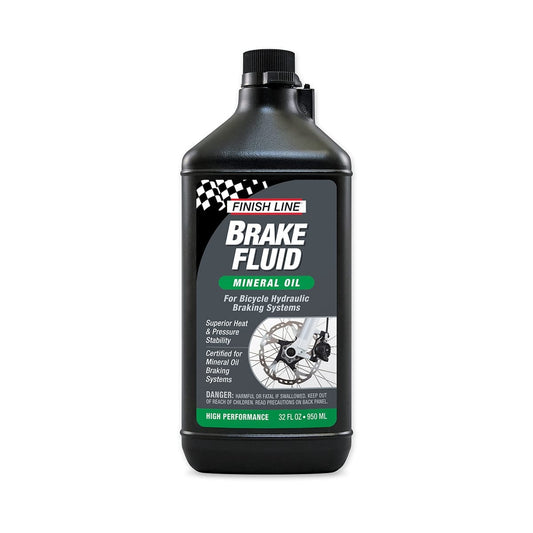
FINISH LINE MINERAL Brake Fluid (950 ml)
Regular price 29,99 €Regular priceUnit price per -
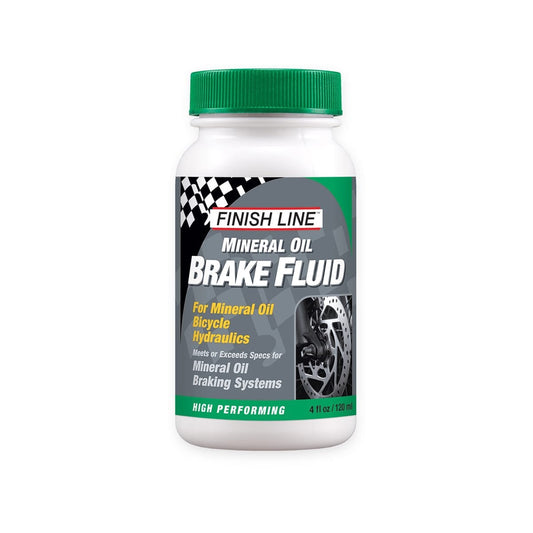
FINISH LINE MINERAL Brake Fluid (120 ml)
Regular price 9,99 €Regular priceUnit price per -
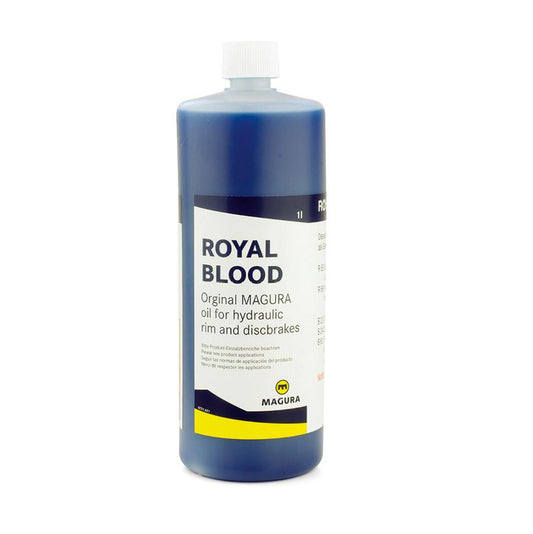
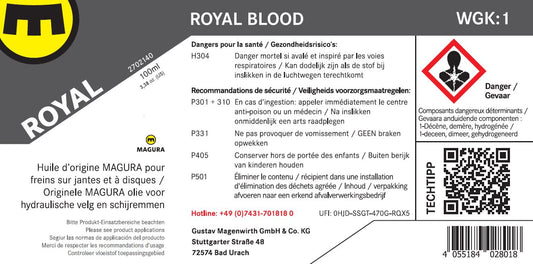
MAGURA ROYAL BLOOD Mineral Brake Fluid (1L)
Regular price 29,99 €Regular priceUnit price per -

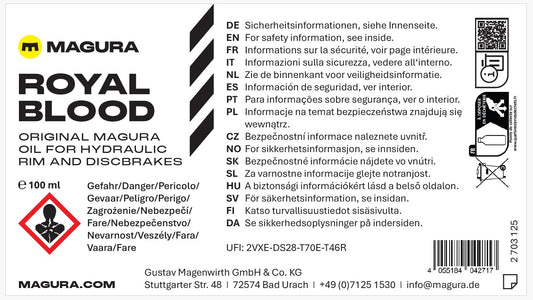
MAGURA ROYAL BLOOD Mineral Brake Fluid (100 ml)
Regular price 6,99 €Regular priceUnit price per -
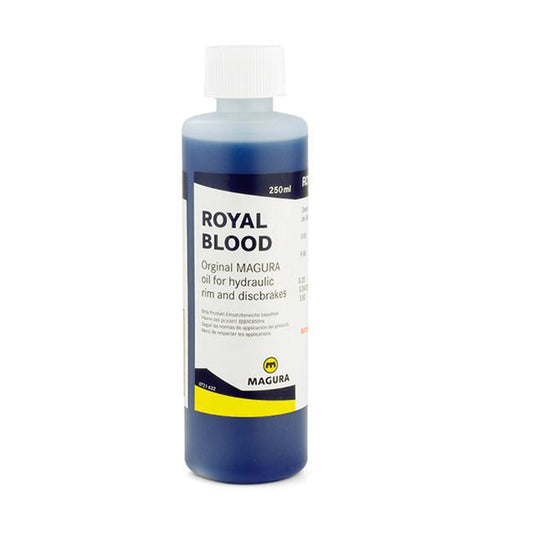
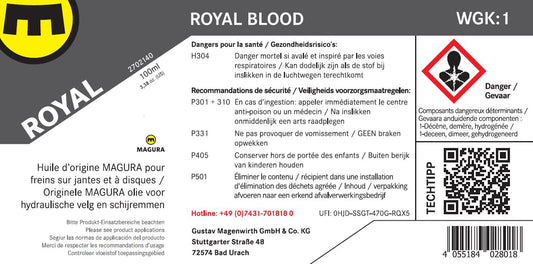
MAGURA ROYAL BLOOD Mineral Brake Fluid (250 ml)
Regular price 15,99 €Regular priceUnit price per -
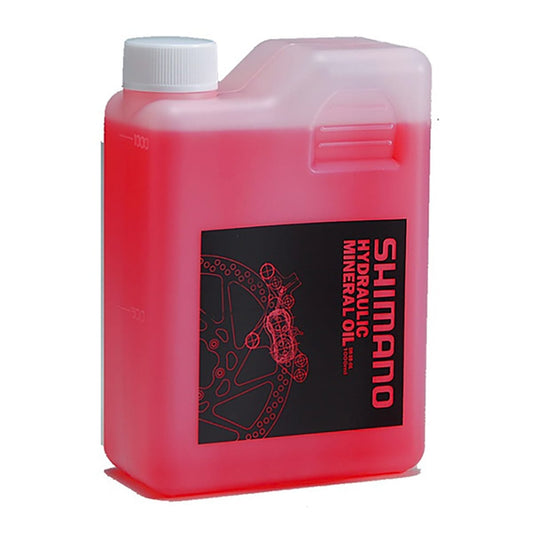
SHIMANO Mineral Brake Fluid (1 L)
Regular price 19,99 €Regular priceUnit price per
